In the dynamic, hybrid world of modern work, ergonomics is more important than ever. Modern workplaces extend far beyond the traditional configuration of a desk and office swivel chair and rely on flexible concepts that promote good health. Individual solutions to meet specific needs – usually a mixture of flexible and fixed workstations – not only support physical well-being, but also boost productivity and creativity. Companies that invest in ergonomic design create space for innovation and promote a sustainable, user-centred working environment that can meet the challenges of the future.
With flexible workplace concepts, such as flex desks, hot desking or desk sharing, the workstations are not permanently assigned to individual employees, but are freely available to the teams as need be. This promotes collaboration and optimises the use of space. So-called touchdown workstations are also flexible, temporary workplaces of this kind. They are used primarily to offer employees a place to work when they come to the office for a short time.
Ergonomic requirements in the TEAM zones:
Intuitive customisation options that can easily be operated even in rapidly changing user constellations.
Our solutions for an auto-dynamic seated posture:
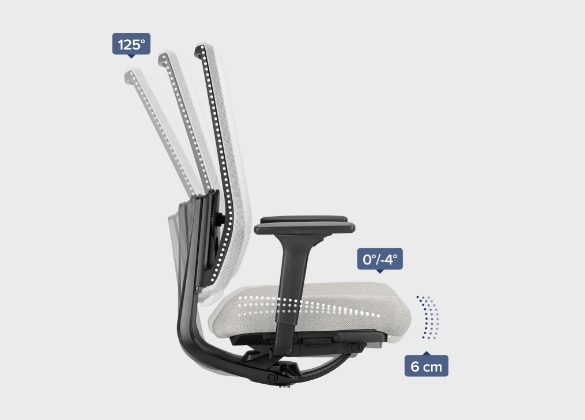

- Synchronised seat and backrest movement
- Automatic, weight-controlled adjustment of the backrest counterpressure, incl. fine adjustment
- Synchronised movement can be locked in the forwardmost position
- Dual-position seat-tilt adjustment (0°/-4°)
- Seat-depth adjustment using sliding seat (6 cm)
Manuals:
You can find this technique within the following product series:
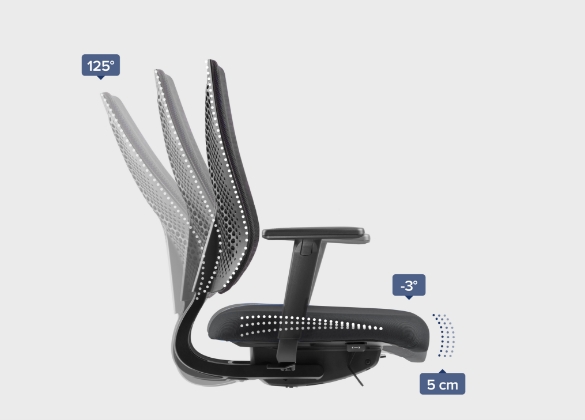

- Synchronised seat and backrest movement
- Automatic, weight-controlled adjustment of the backrest counterpressure
- Backrest can be locked in 3 positions
- Dual-position seat-tilt adjustment (0°/-4°)
- Seat-depth adjustment using sliding seat (7 cm)
You can find this technique within the following product series:
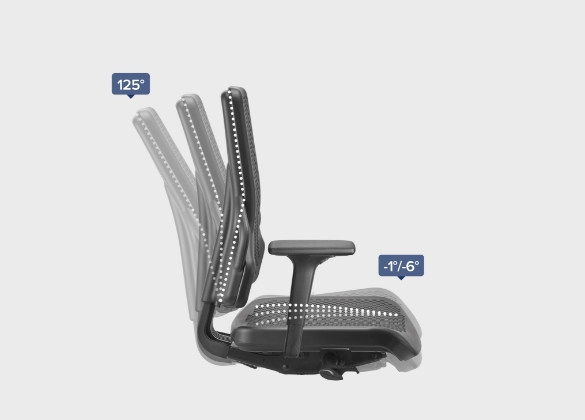

- Automatic, weight-controlled adjustment of the backrest counterpressure
- Harmonious, synchronised seat and backrest movement
- Backrest tilt angle can be set in 3 positions
- Option: Seat-depth adjustment using sliding seat (6 cm) and dual-position seat-tilt adjustment (-1°/-6°)
Manuals:
You can find this technique within the following product series:
In hybrid work environments offering flexible workspaces, there will still be some members of the team who are permanently present in the office and keep fixed workstations. Employees who regularly use special technical equipment or work with confidential information also benefit from having a permanently assigned, personal workplace.
Ergonomic requirements in the ME zones:
Our solutions for a dynamic seated posture:
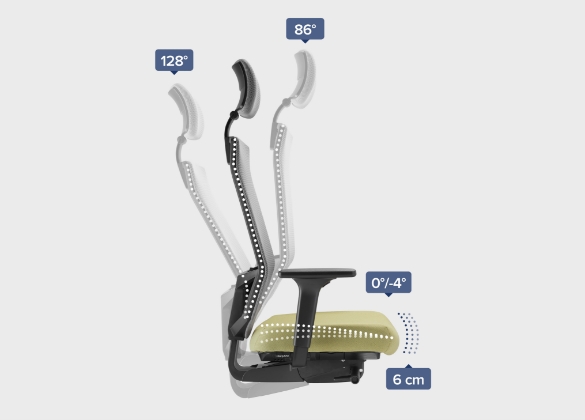

- Harmonious, synchronised seat and backrest movement
- Side-mounted adjustment of the backrest counterpressure by a handwheel (can be pulled out)
- Synchronised movement can be locked in 4 positions
- Pre-selectable seat tilt up to −4°
- Seat-depth adjustment using sliding seat (8 cm; @Just evo 6 cm); XL/NPR versions: 10 cm
Manuals:
You can find this technique within the following product series:
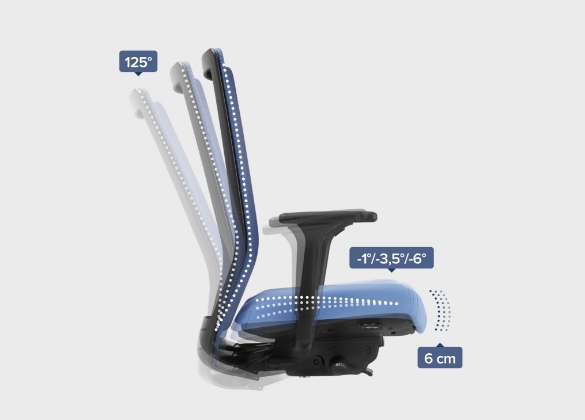

- Synchronised seat and backrest movement
- Synchronised movement can be locked in 4 positions
- Rapid adjustment of the backrest counterpressure with ten index settings
- Three-position seat-tilt adjustment (-1°/-3.5°/-6°)
- Seat-depth adjustment using sliding seat (6 cm); XL/NPR versions: 10 cm
Manuals:
You can find this technique within the following product series:
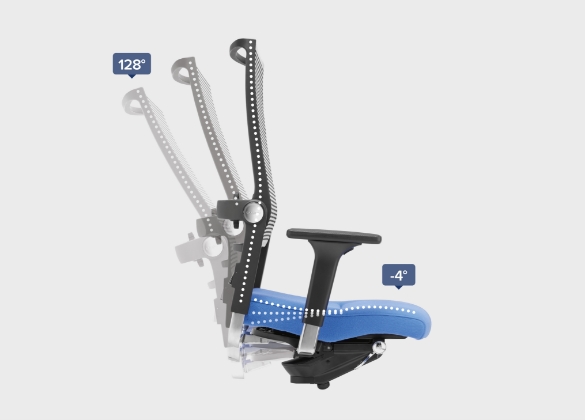


- Harmonious, synchronised seat and backrest movement
- Synchronised movement can be locked in 4 positions
- Immediately noticeable adjustment to your individual body weight with just a few turns, for constant backrest counterpressure throughout the movement process
- Integrated seat-tilt adjustment (up to -4°) during the movement process thanks to a seat shell that is divided into three sections (active pelvic support)
- Seat-depth adjustment using sliding seat (5 cm)
Manuals:
You can find this technique within the following product series:
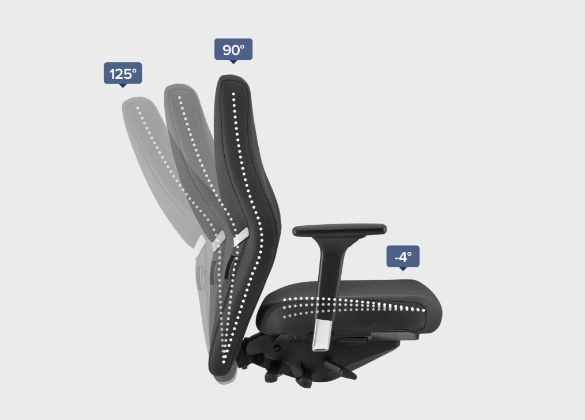

- Synchronised seat and backrest movement
- Synchronised movement infinitely lockable (using gas unit)
- Side-mounted fine adjustment of the backrest counterpressure with just a few turns
- Seat-depth adjustment using sliding seat (6 cm)
Manuals:
You can find this technique within the following product series:
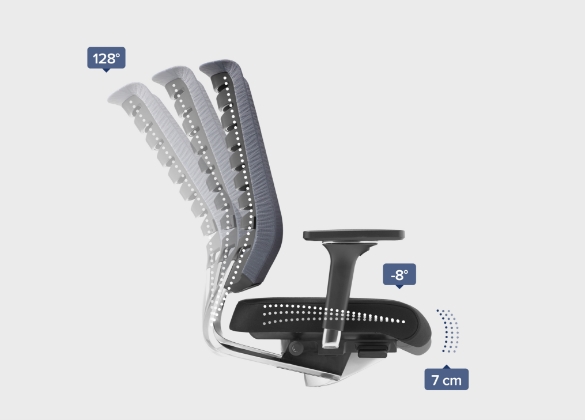

- Harmonious, synchronised seat and backrest movement
- Side-mounted fine adjustment of the backrest counterpressure with just a few turns for constant backrest counterpressure throughout the movement process
- Backrest tilt angle can be set to 4 positions, backrest can be locked in the forwardmost position
- Seat-depth adjustment using sliding seat (7 cm)
- Option: Infinite seat-tilt adjustment from -2° to -8°
Manuals:
You can find this technique within the following product series:
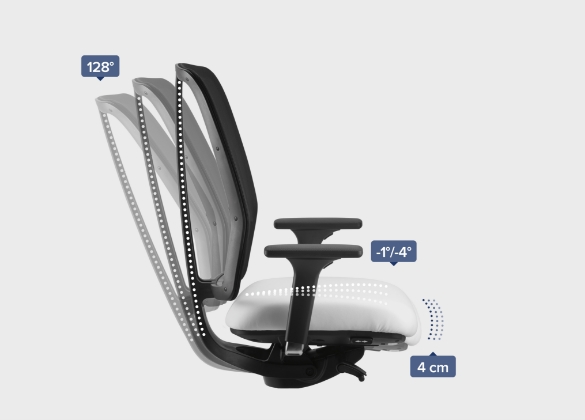

- Synchronised seat and backrest movement
- A large opening angle between the backrest and seat (128°) provides the greatest possible level of relaxation for the person sitting on it, particularly in the rear seated posture and working position
- Side-mounted, rapid adjustment of the backrest counterpressure by a handwheel (can be pulled out)
- Synchronised movement can be locked in 3 positions
- Option 1: Seat-depth adjustment (4 cm)
- Option 2: Seat-depth adjustment 4 cm and dual-position seat-tilt adjustment (-1°/-4°)
Manuals:
You can find this technique within the following product series:
Whether it's hybrid or remote work, there has probably never been more flexibility and independence in the history of work. What sounds paradoxical is the fact that, although we are working more and more flexibly and remotely, unfortunately we are physically moving less and less. However, the back problems that often result from this can be avoided – the magic word is exercise.
Very much reflecting the motto: work hybrid – stay active!
Our individually adjustable Balance mechanisms offer the following advantages for ME zones in modern new work environments:
Dynamism and movement: They promote continuous movement and make it possible to switch actively between different postures, which helps to prevent fatigue and incorrect postures.
Physical activation: The variable use of the muscles stimulates blood circulation and improves oxygen supply.
Promoting concentration: Active breaks and changing working positions support mental freshness and creativity.
Prevention of complaints: Regular adjustments to the movement sequence prevent long-term health problems.
Our solutions for a dynamically activating seated posture:
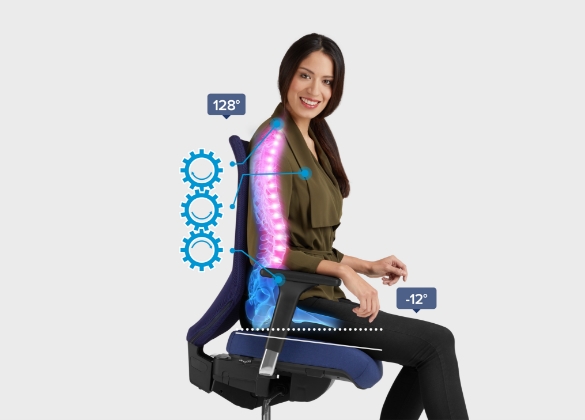

- Synchronised seat and backrest movement
- Synchronised movement infinitely lockable (using gas unit)
- Side-mounted fine adjustment of the backrest counterpressure with just a few turns
- Individual or automatic tilt adjustment for the seat (up to -12° towards the front) and backrest (up to 128° towards the rear), which can be locked in a number of positions, provides stimuli for straightening the spinal column.
- Seat-depth adjustment using sliding seat (6 cm)
Manuals:
You can find this technique within the following product series:
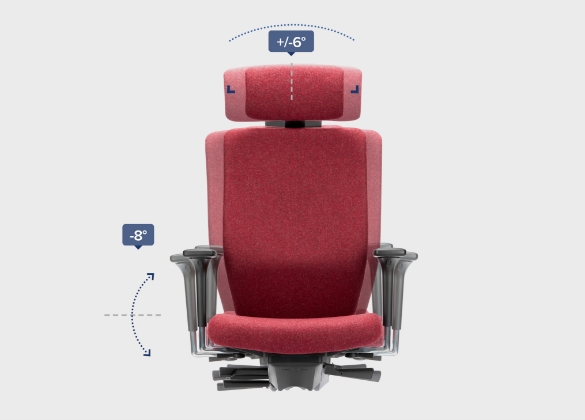

- Synchronised seat and backrest movement
- Synchronised movement infinitely lockable (using gas unit)
- Side-mounted fine adjustment of the backrest counterpressure with just a few turns
- Automatic tilt adjustment for the seat (up to -8° towards the front) and backrest (up to 128° towards the rear), which can be locked in a number of positions, encourages natural movements, maintains concentration and improves the user’s performance
- Automatic movement of the seat and backrest to both sides (+/-6°) helps the user to adopt a free, natural seated posture
- Locking in the zero position or at a forward tilt of -6° (3Df)
- Seat-depth adjustment using sliding seat (6 cm)
Manuals:
You can find this technique within the following product series:
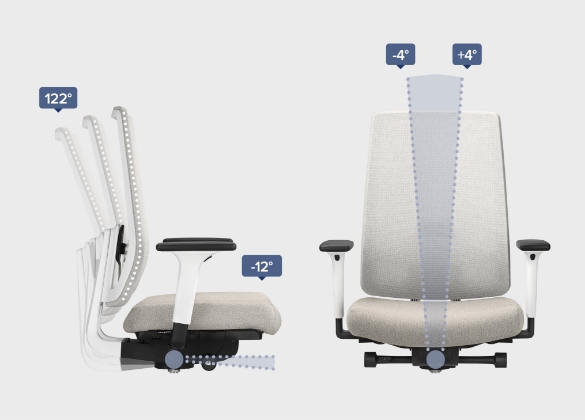

- Synchronised seat and backrest movement
- Backrest tilt angle can be set to 4 positions, backrest can be locked in the forwardmost position
- Side-mounted fine adjustment of the backrest counterpressure with just a few turns
- Automatic tilt adjustment for the seat (up to -4° towards the front) and backrest (up to 122° towards the rear), which can be locked in the zero position, encourages natural movements, maintains concentration and improves the user’s performance
- Automatic movement of the seat and backrest to both sides (+/-4°) helps the user to adopt a free, natural seated posture
- Seat-depth adjustment using sliding seat (6 cm)
Manuals:
You can find this technique within the following product series:
When you sit at a conference table or at touchdown workstations, so in communicative TEAM zones, an active seat tilt is the best option to promote a healthy seated posture and add more dynamism and efficiency to the meeting.
At industrial workstations in ME and TEAM zones, a forward-facing seated posture often predominates. It is important here for the backrest to follow the movements of the person sitting on the chair and thus allow a change of posture in the upper body, but also offer secure support.
Our solutions for a flexible seated posture:
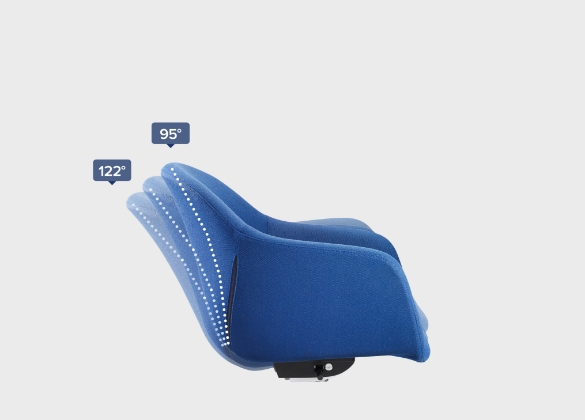

- Seat shell permanently follows the movements of the upper body with a constantly open seat angle of 95°.
- Infinite adjustment of the backrest counterpressure for body weights of approx. 50–125 kg.
- Seat-shell tilt can be locked in 4 positions.
- See-saw mechanism with large seat-shell tilt angle, incl. forward seat tilt
- Ideal for conferences and for touchdown workstations.
Manuals:
You can find this technique within the following product series:
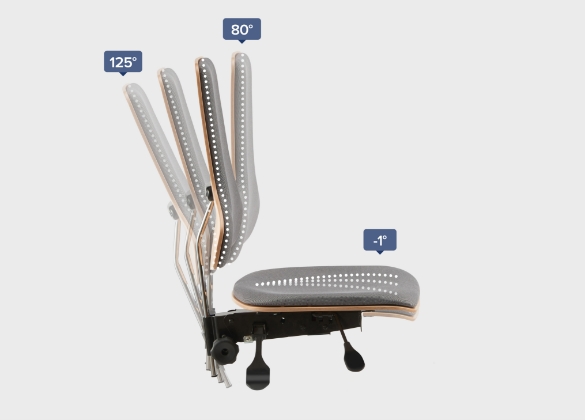

- Backrest permanently follows the movements of the upper body.
- Backrest counterpressure designed for a body weight of approx. 60 kg.
- Backrest tilt can be infinitely locked.
- Permanent contact backrest with seat-tilt adjustment (-10°).
- Permanent contact mechanism as PC, only with additional infinite forward adjustment (up to -10°) of the upper part of the chair.
Manuals:
You can find this technique within the following product series:
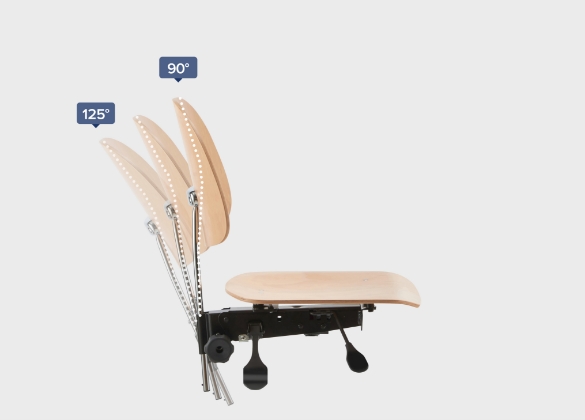

- Backrest permanently follows the movements of the upper body.
- Backrest counterpressure designed for a body weight of approx. 60 kg.
- Backrest tilt can be infinitely locked.
Manuals:
You can find this technique within the following product series: